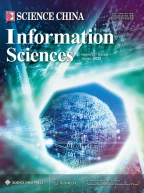创新点
-
1.
构建了一个以“基元频率”为准则的稀疏信号主元分析方法。
-
2.
“基元频率”准则适合于在非正交超完备空间(超完备字典)上的主元分析, 它也是稀疏信号的一个重要特征。
-
3.
“稀疏信号主元分析”方法将信号的“能量集中特性”、“稀疏表达特性”和“基元高频率特性”集中于稀疏分解框架, 从而在抑制强噪声的同时有效地保留弱信号细节。
References
Pearson K. On lines and planes of closest fit to systems of points in space. Philos Mag, 1901, 2: 559–572
Elad M, Aharon M. Image denoising via sparse and redundant representations over learned dictionaries. IEEE Trans Image Process, 2006, 15: 3736–3745
Aharon M, Elad M, Bruckstein A. K-SVD: an algorithm for designing overcomplete dictionaries for sparse representation. IEEE Trans Signal Process, 2006, 54: 4311–4322
Zhao Q, Meng D Y, Xu Z B. Robust sparse principal component analysis. Sci China Inf Sci, 2014, 57: 092115
Deledalle C A, Denis L, Tupin F. Iterative weighted maximum likelihood denoising with probabilistic patch-based weights. IEEE Trans Image Process, 2009, 18: 2661–2672
Zhang Z, Li F, Zhao M, et al. Joint low-rank and sparse principal feature coding for enhanced robust representation and visual classification. IEEE Trans Image Process, 2016, 25: 2429–2443
Acknowledgements
This work was supported by National Natural Science Foundation of China (Grant No. 60872131). The idea of the principal basis analysis presented here arises through a lot of deep discussions with Professor Henri Maître at Telecom-ParisTech in France. We are also grateful to Prof. Didier Le Ruyet at CNAM in France for many fruitful discussions.
Author information
Authors and Affiliations
Corresponding author
Additional information
The authors declare that they have no conflict of interest.
